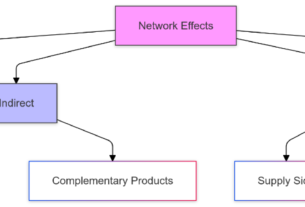What is Activity-Based Management (ABM)?
Activity-Based Management (ABM) is an advanced management approach that integrates activity-based costing (ABC) with performance management. Unlike traditional costing methods that allocate costs based on arbitrary percentages or volume metrics, ABC assigns costs to specific activities within the organization. This method ensures that each activity is associated with its actual cost drivers.
ABM can be categorized into two main types: Operational ABM and Strategic ABM. Operational ABM focuses on “doing things right” by identifying and enhancing value-added activities while eliminating or reducing non-value-added ones. On the other hand, Strategic ABM focuses on “doing the right things” by analyzing product and customer profitability to make strategic decisions.
- What is Network Effect? Analyzing Value Growth in Connected Systems
- Unlock Stable Returns: What Are Blue-Chip Stocks and Why You Should Invest
- Maximize Your Savings: A Comprehensive Guide to Bank Deposits
- How Cash on Delivery (COD) Works: Benefits, Risks, and Best Practices for Businesses
- Unlocking Profit: How Market Anomalies Can Boost Your Investment Returns
Operational Activity-Based Management
Operational ABM is all about efficiency and effectiveness in daily operations. It involves a detailed analysis of all activities within the organization to identify which ones add value and which do not. By focusing on value-added activities, companies can streamline processes, automate where possible, and optimize resource use.
For example, a manufacturing company might use Operational ABM to identify that a significant portion of its labor hours are spent on manual data entry. By automating this process through software integration, the company can reduce labor costs and free up employees to focus on more critical tasks.
Strategic Activity-Based Management
Strategic ABM takes a broader view by using ABC to analyze product and customer profitability. This helps businesses make informed decisions about which products to develop further and which customers to prioritize. For instance, a retail company might discover through customer profitability analysis that a small segment of its customers accounts for a disproportionate amount of profits due to their high purchase frequency and low return rates.
This insight can lead the company to tailor its marketing efforts and customer service strategies to better serve these high-value customers, thereby increasing overall profitability.
Benefits of Activity-Based Management
The implementation of ABM offers several compelling benefits. First and foremost, it provides enhanced cost accuracy by linking costs directly to the activities that incur them. This accuracy improves decision-making at all levels of the organization.
ABM also fosters continuous improvement by aligning processes with market dynamics and customer expectations. By regularly reviewing and optimizing activities, companies can stay agile in a rapidly changing business environment.
Additionally, ABM contributes to increased efficiency by eliminating non-value-added activities and optimizing resource allocation. This not only reduces costs but also enhances customer satisfaction as processes become more streamlined and responsive.
Implementation of Activity-Based Management
Implementing ABM involves several key steps:
1. Classifying Activities: Identify all the activities performed within the organization.
2. Identifying Cost Drivers: Determine what drives the costs associated with each activity.
3. Ranking Value-Added Activities: Prioritize activities based on their contribution to value creation.
Cost driver analysis is crucial here as it helps in accurately allocating costs to specific activities. Performance measurement is also essential to monitor the effectiveness of ABM initiatives over time.
Starting with a single department or pilot project is often recommended to test the waters before scaling up across the entire organization.
Risks and Considerations
While ABM offers numerous benefits, there are some risks and considerations to be aware of:
– Ignoring the intrinsic value of certain activities that may not have immediate financial returns but are crucial for long-term success.
– Focusing solely on quantifiable aspects might overlook implicit values such as employee morale or brand reputation.
It’s important to strike a balance between financial metrics and qualitative assessments when evaluating activities under ABM.
Case Studies and Examples
Several companies across various industries have successfully implemented ABM with remarkable results:
– A banking institution used Operational ABM to automate back-office processes, resulting in significant cost savings and improved service delivery times.
– A retail chain employed Strategic ABM to identify highly profitable customer segments, leading to targeted marketing campaigns that boosted sales.
These case studies highlight how ABM can be tailored to different business needs and environments.
Nguồn: https://gapinsurance.click
Danh mục: Blog




